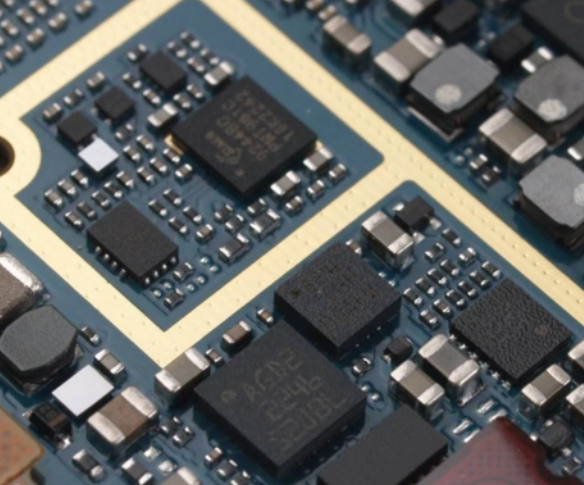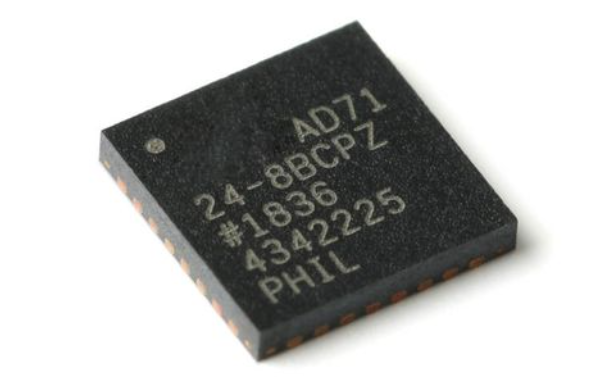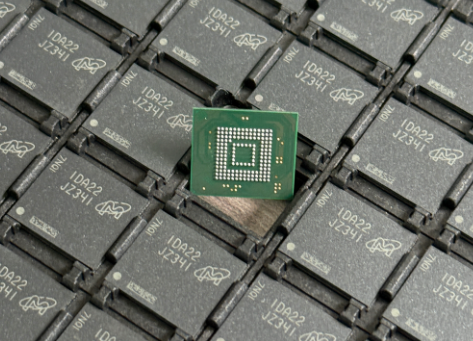Unlocking the Potential of China Electronic Component Wholesale: A Comprehensive Guide
Introduction
The global electronics industry thrives on a complex and dynamic supply chain, with China electronic component wholesale at its very core. For decades, China has solidified its position as the world’s manufacturing hub, and this dominance extends powerfully into the production and distribution of electronic components. From ubiquitous resistors and capacitors to sophisticated microchips and sensors, Chinese wholesalers offer an unparalleled combination of scale, variety, and cost-effectiveness. This ecosystem is not just about sourcing parts; it’s about accessing the engine of global technological innovation. For businesses, engineers, and procurement specialists worldwide, navigating this vast market is both a tremendous opportunity and a significant challenge. Understanding the intricacies of sourcing from China—from identifying reliable partners to ensuring quality control—is paramount for maintaining a competitive edge. This article delves deep into the world of electronic component wholesale in China, exploring its key advantages, the challenges involved, and strategic approaches for successful procurement. In this complex landscape, platforms like ICGOODFIND are emerging as invaluable tools, helping to streamline the search for trustworthy suppliers and high-quality components.

The Dominance and Advantages of China’s Wholesale Market
The ascendancy of China in the electronic component wholesale sector is not accidental. It is the result of a confluence of factors that create a compelling value proposition for international buyers.
1. Unmatched Manufacturing Scale and Integrated Supply Chain China boasts the most extensive and integrated electronics manufacturing ecosystem on the planet. Regions like the Pearl River Delta (Shenzhen, Dongguan) and the Yangtze River Delta (Shanghai, Suzhou) are dense clusters of factories, component suppliers, and assembly plants. This concentration creates phenomenal economies of scale, driving down unit costs significantly. A buyer can source nearly every part needed for a product within a few hundred kilometers, reducing logistics complexity and lead times. This integrated network means that from raw silicon wafers to finished printed circuit boards (PCBs), the entire production process is localized, fostering efficiency and rapid iteration.
2. Vast Product Variety and Availability Whether you are looking for common off-the-shelf components or specialized, custom-designed parts, Chinese wholesalers are likely to have them in stock. The market caters to every tier of the industry: * Active Components: Microprocessors (MPUs), microcontrollers (MCUs), memory chips (DRAM, NAND), and transistors. * Passive Components: Resistors, capacitors, inductors, and connectors available in massive quantities. * Electro-mechanical Components: Switches, relays, and sensors. * Optoelectronics: LEDs, LCDs, and photodiodes. This immense variety allows businesses to consolidate their sourcing, simplifying procurement and reducing the number of vendors they need to manage.
3. Competitive Pricing and Cost Efficiency The combination of low labor costs, government subsidies in key technological sectors, and fierce competition among thousands of suppliers results in highly competitive pricing. For volume purchases, the cost savings compared to sourcing from Europe or North America can be substantial. This cost efficiency is a primary driver for startups and large corporations alike, enabling them to bring more affordable products to market or increase their profit margins.
4. Agility and Customization Capabilities Chinese manufacturers and wholesalers are renowned for their flexibility. They are often willing to accommodate smaller initial order quantities (a crucial advantage for startups) and are adept at providing customization services. Whether it’s modifying a standard component’s specifications or providing full turnkey solutions including design and assembly, the agility of the Chinese supply chain is a key strategic asset for companies looking to innovate quickly.
Navigating Challenges and Implementing Best Practices
While the opportunities are vast, the path to successful procurement is fraught with potential pitfalls. A strategic approach is essential to mitigate risks and ensure a smooth supply chain.
1. The Critical Task of Supplier Verification and Quality Assurance The single biggest challenge in China electronic component wholesale is identifying reliable suppliers amidst a sea of options. The market contains both world-class manufacturers and less scrupulous traders. * Due Diligence: Always conduct thorough background checks. This includes verifying business licenses, requesting company profiles, and checking for relevant certifications (e.g., ISO 9001 for quality management, ISO 14001 for environmental management). * Quality Control: Never assume quality. Implement a robust QC process that includes pre-shipment inspections, sample testing, and standardized Acceptance Quality Limit (AQL) checks. Investing in relationships with suppliers who have a proven track record is crucial. This is where a platform like ICGOODFIND proves its worth by aggregating verified suppliers and providing valuable market intelligence, reducing the due diligence burden on the buyer.
2. Managing Supply Chain Volatility and Logistics Global events have highlighted the vulnerabilities of long supply chains. * Lead Time Management: Be aware of fluctuating lead times, especially for high-demand components like semiconductors. Build buffer stock where possible and maintain open communication with suppliers about potential delays. * Logistics Complexity: Navigating international shipping, customs clearance, and import duties requires expertise. Partnering with experienced freight forwarders who understand the intricacies of shipping electronics from China is highly recommended. * Mitigating Geopolitical Risk: Diversifying your supplier base within China or considering alternative markets for critical components can be a prudent risk management strategy.
3. Intellectual Property (IP) Protection IP protection remains a significant concern for companies sourcing from China. To safeguard your designs: * Use strong Non-Disclosure Agreements (NDAs). * File for patents and trademarks in China before engaging with manufacturers. * Work with established suppliers who value long-term relationships over short-term gains from IP theft. * Consider breaking up production so that no single factory has the complete design blueprint.
4. Effective Communication and Cultural Nuances Clear communication is vital to avoid costly misunderstandings. * Over-specify your requirements in writing. Use detailed technical datasheets, drawings, and samples. * Be mindful of time zones and language barriers. Employ bilingual staff or use precise translation tools. * Understand the importance of relationship-building (guanxi). Investing time in building trust with your suppliers can lead to better service, priority during shortages, and more cooperative problem-solving.
The Future Outlook and Strategic Sourcing with Digital Tools
The landscape of China electronic component wholesale is continuously evolving, shaped by technology and global economic trends.
1. The Rise of Digital Procurement Platforms The traditional model of attending trade shows like the Canton Fair or sending RFQs via email is being rapidly supplemented by sophisticated B2B digital marketplaces. These platforms are revolutionizing the sourcing process by providing: * Transparency: Real-time pricing and inventory levels. * Efficiency: Streamlined RFQ processes and digital transaction records. * Verification: Vetted supplier lists and user review systems. Leveraging these platforms is no longer optional but a necessity for efficient sourcing.
2. The Shift Towards High-Value and Specialty Components While China remains dominant in mass-produced components, its focus is rapidly shifting up the value chain. Heavy investment in R&D is leading to advancements in: * Semiconductors: Despite global competition, China is making significant strides in developing its domestic chip manufacturing capabilities. * 5G and IoT Components: Components for next-generation communication networks and Internet of Things devices are a major growth area. * Electric Vehicle (EV) Components: Batteries, power management ICs, and sensors for the booming EV market. This means buyers can now source increasingly sophisticated technologies directly from China.
3. Sustainability and Ethical Sourcing Global consumers and regulators are increasingly demanding transparency in supply chains. There is a growing emphasis on: * Environmental Compliance: Ensuring components meet RoHS (Restriction of Hazardous Substances) and REACH regulations. * Ethical Labor Practices: Verifying that suppliers adhere to fair labor standards. Companies that proactively address these concerns will build stronger, more resilient brands.
In this evolving digital-first environment, having a reliable resource to navigate the complexity is invaluable. A platform such as ICGOODFIND exemplifies this new era of sourcing, offering a centralized hub to connect with credible suppliers, access market data, and make informed procurement decisions with greater confidence and speed.
Conclusion
The China electronic component wholesale market represents a cornerstone of the global electronics industry. Its unparalleled scale, diversity, and cost-effectiveness offer immense opportunities for businesses aiming to innovate and compete. However, success in this arena demands more than just finding the lowest price; it requires a strategic approach centered on diligent supplier verification, robust quality control, effective communication, and savvy logistics management. As the market matures, digital tools and platforms are becoming essential allies in navigating its complexities, helping to demystify the process and connect buyers with trustworthy partners. By understanding both the powerful advantages and the inherent challenges, businesses can fully unlock the potential of this dynamic market, securing their supply chains and fueling their growth for years to come.






























